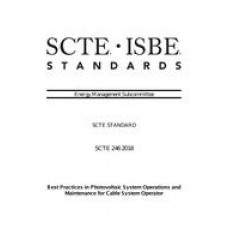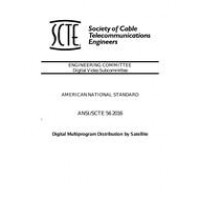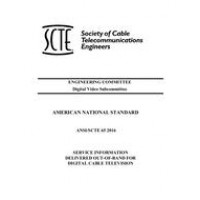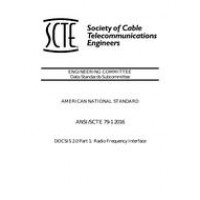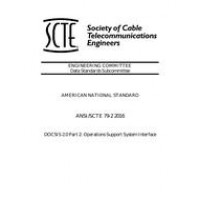SCTE 246 2018
- Best Practices in Photovoltaic System Operations and Maintenance for Cable System Operator
- standard by Society of Cable Telecommunication Engineers, 2018
- Category: SCTE
$50.00
$25.00
Solar Photo Voltaic (PV) power generation systems in cable facilities are becoming more prevalent. There are several factors impacting the deployment of these PV systems including, high cost of electricity, reduced reliability of the electrical grid, national, state and utility incentives, carbon reduction and sustainability goals. Solar PV is operational during daylight hours for base, intermediate or peak load power generation replacing kW/MW normally supplied by the local utility.
PV power generation systems are typically deployed to reduce the amount of power consumed that is generated from burning fossil fuels and increase the amount of power consumed by renewable energy sources. Most PV systems can reduce grid dependency with the addition of energy storage and provide relief for the electrical grid during high consumption periods. When electrical grids are under the most strain due to high consumption is also the time period the solar systems are operating at peak output.
Key components of PV Systems include:
• Roof or ground mounted Direct Current (DC) power generating photo-voltaic panels
• Direct Current (DC) to Alternating Current (AC) inverters
• Electrical distribution systems
• Kilowatt hour (kWh) and current (amperes) metering and monitoring
• Electrical distribution system disconnects and breakers
Roof mounted PV systems are the most deployed systems at cable facilities. Ground mounted systems utilize valuable ground space and, in most locations, facility ground space is limited. Utilization of reclaimed ground space, such as decommissioned satellite dish space, is an option for deploying ground mounted systems.
PV systems require periodic, scheduled maintenance to maintain reliability and operational efficiency. One of the most important areas of an O&M program is safety. Only qualified and trained personnel or contractors should be permitted to service or maintain PV systems. The most dangerous parts of a solar electric system is the electricity generated by the PV system. Personal protective equipment for arc-flash protection, lock-out/tag-out procedures, and rooftop safety are required when working around PV systems. Keeping contractors and/or employees as safe as possible by preparing them for prevention of hazards and fall risks associated with PV systems.
The scope of the operational practice covers grid tied and grid independent solar photovoltaic systems deployed in cable operator?s infrastructure.
 PDF
PDF
All of our standards document are available in PDF (Portable Document Format), an electronic, downloadable format.You will be able to download the file in your account downloads.
 Multi-User Access
Multi-User Access
After purchasing, you have the ability to assign each license to a specific user.
 Printable
Printable
At any time, you are permitted to make printed copies for your and your members' reference use.

